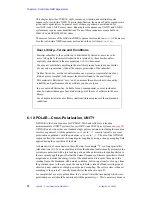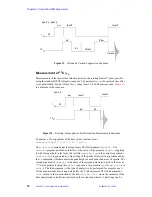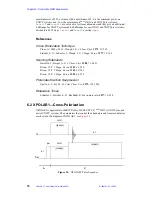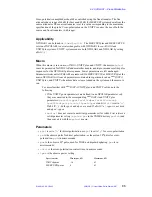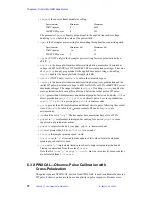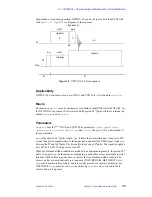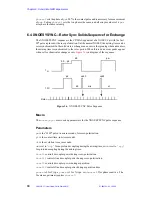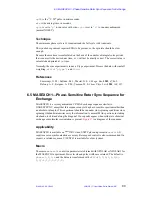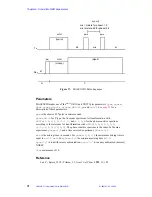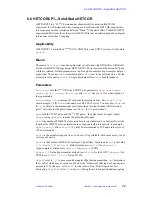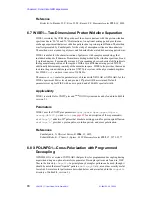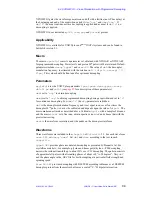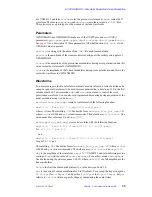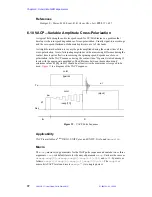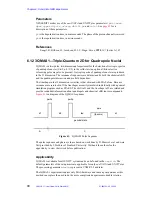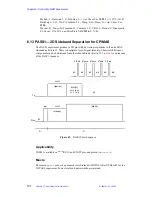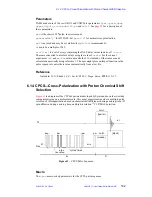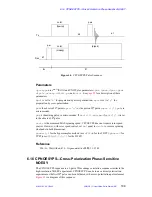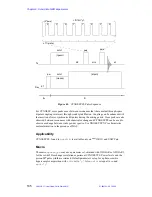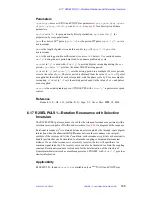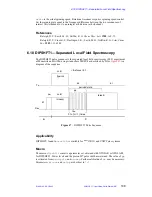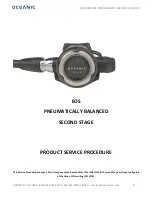
6.8 XPOLWFG1—Cross-Polarization with Programmed Decoupling
01-999162-00 C0402
VNMR 6.1C User Guide: Solid-State NMR
94
XPOLWFG1 gates the waveform generator on and off with a fastline (no AP bus delay) at
the beginning and end of the acquisition period if
dm='nny'
and
dmm='ccp'
. If
dm='c'
the usual continuous wave decoupling is applied and as usual if
dm='n'
no
decoupling is applied.
XPOLWFG1 does not include
p180
,
toss
,
pdp
and
pcrho
at present.
Applicability
XPOLWFG1 is available for UNITYplus and
UNITY
INOVA systems and can be found in
SolidsLib version 2.1.
Macro
The macro
xpolwfg1
converts a parameter set, obtained with XPOLAR or XPOLAR1,
for programmed decoupling. Power levels and proton 90
°
pulse width are retained. Default
parameters include
dseq='tppm2'
and
dres=90
. The value of
dmf
, the decoupler
modulation frequency, is estimated with the relation
dmf= (dipolr/crossp) *(1/
4*pw)
. This value should be fine-tuned for optimum decoupling.
Parameters
xpolwfg1
uses the UNITYplus parameters,
tpwr
,
tpwrm
,
dpwr
,
cppwr
,
crossp
,
db1v12
,
pw
and
cntct
(see
for a description of these parameters).
dm
is set to
'nny'
to obtain decoupling.
dmm
is set to
'ccp'
to obtain programmed decoupling during acquisition and set to
'c'
for continuous decoupling. For
dmm='c'
the
wfg
parameters are hidden.
dmf
is the decoupler modulation frequency and is set equal to one over four times the
decoupler 90°
°
pulse.
dmf
must be calibrated and depends upon the value of
dipolr
. The
macro makes an estimate as described above. Calibrate
dipolr
with a sample of dioxane
and the macro
h2cal
or to fine tune, obtain spectra versus
dmf
and choose that with the
greatest narrowing.
dres
is the waveform resolution, and it depends on the decoupler waveform.
Waveforms
Three waveforms are included in the
shapelib
of
Solidslib
2.1. For each waveform
name.DEC
, set
dseq='name'
. Set
dmf
and
dres
according to the text in each
shapefile
.
tppm2.DEC
provides phase-modulated decoupling as presented by Bennett et al. For
crystalline materials—for example, glycine and linear polyethylene—PM decoupling
narrows the residual linewidth up to about 30% over CW decoupling. The pattern consists
of approximate
π
pulses with alternating phases of about ±10° to 30 degrees°. Vary
dmf
and the phase angle in the .DEC file for best decoupling at a particular field strength and
spinning speed.
blew 48.DEC
provides decoupling with BLEW-48 according to Burum et. al. BLEW-48
decouples protons from themselves but leaves a scaled
13
C–
1
H dipolar interaction.


